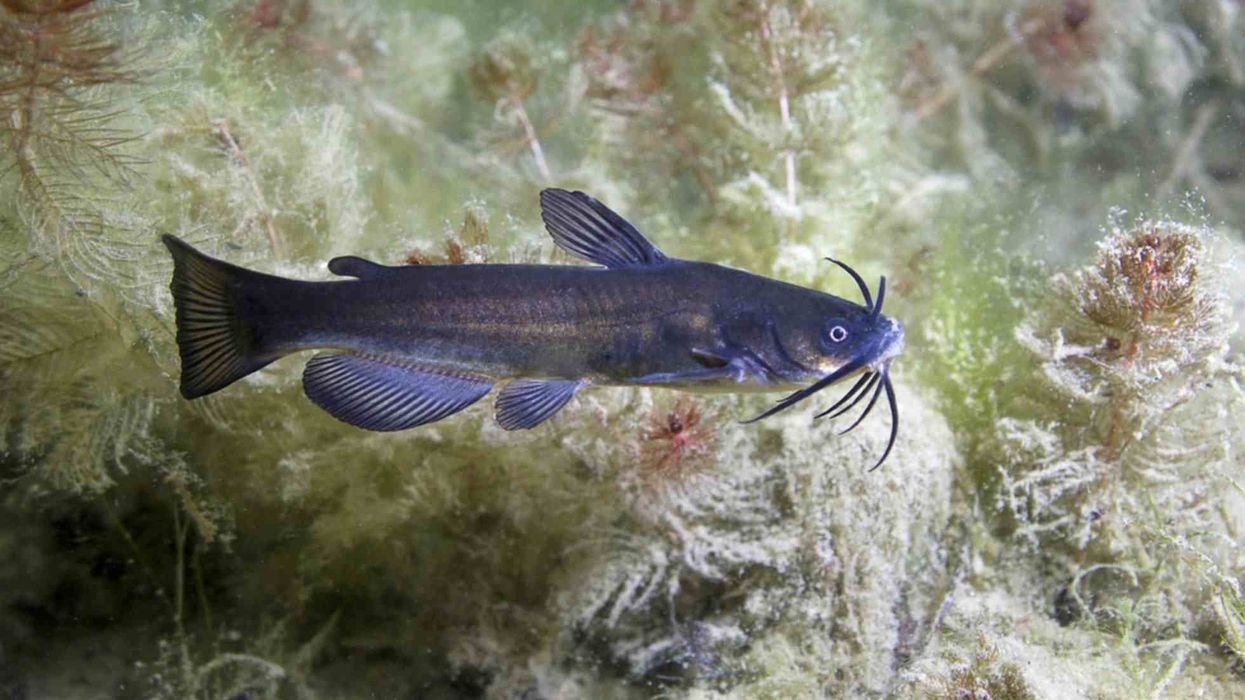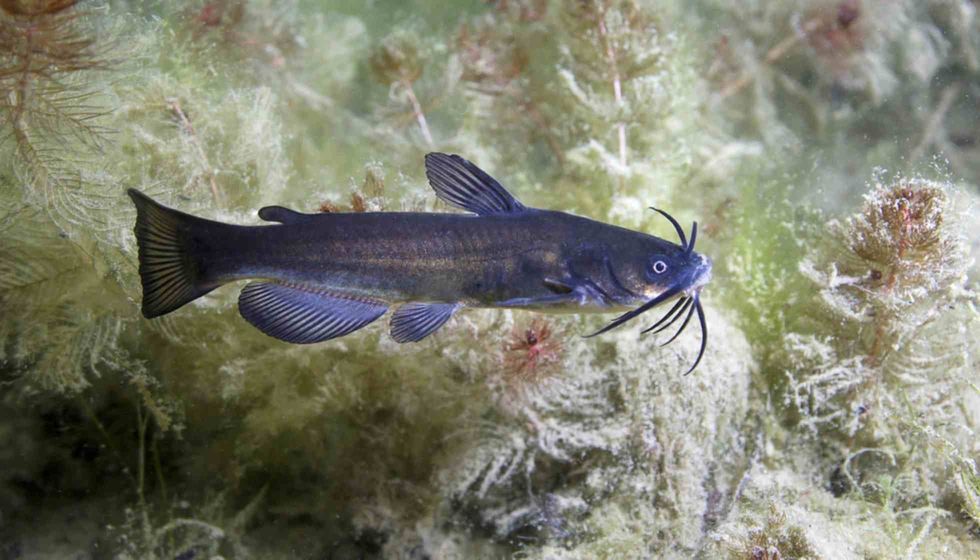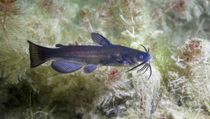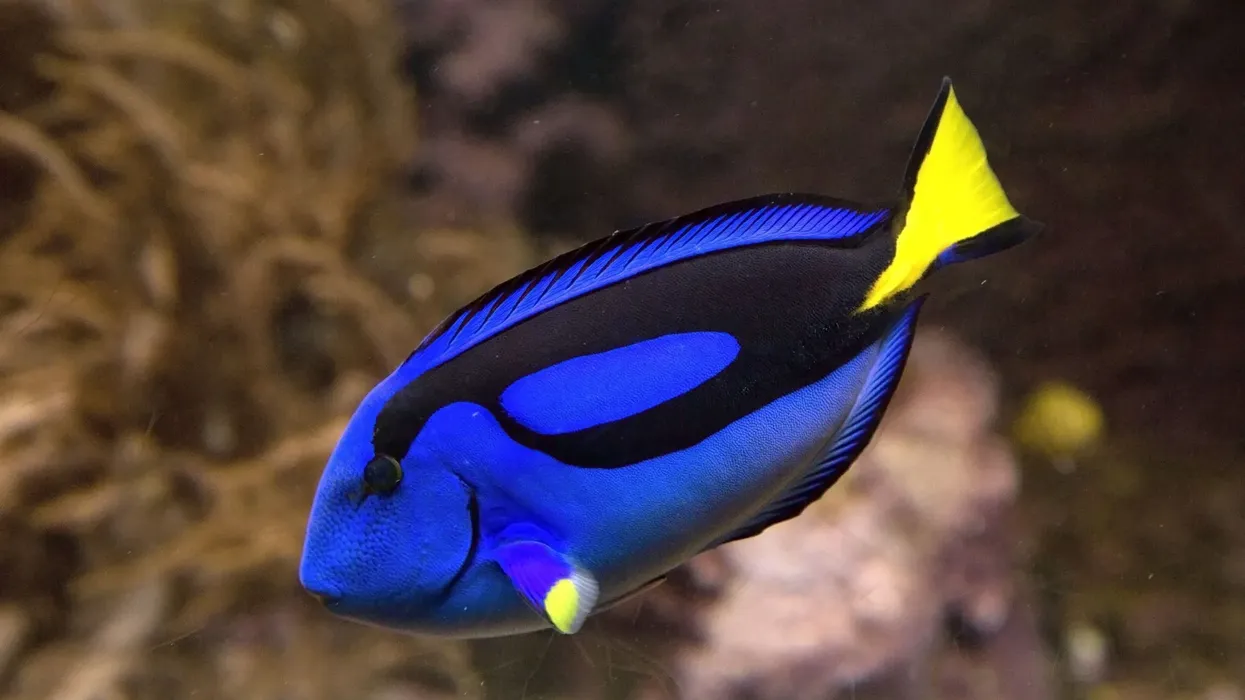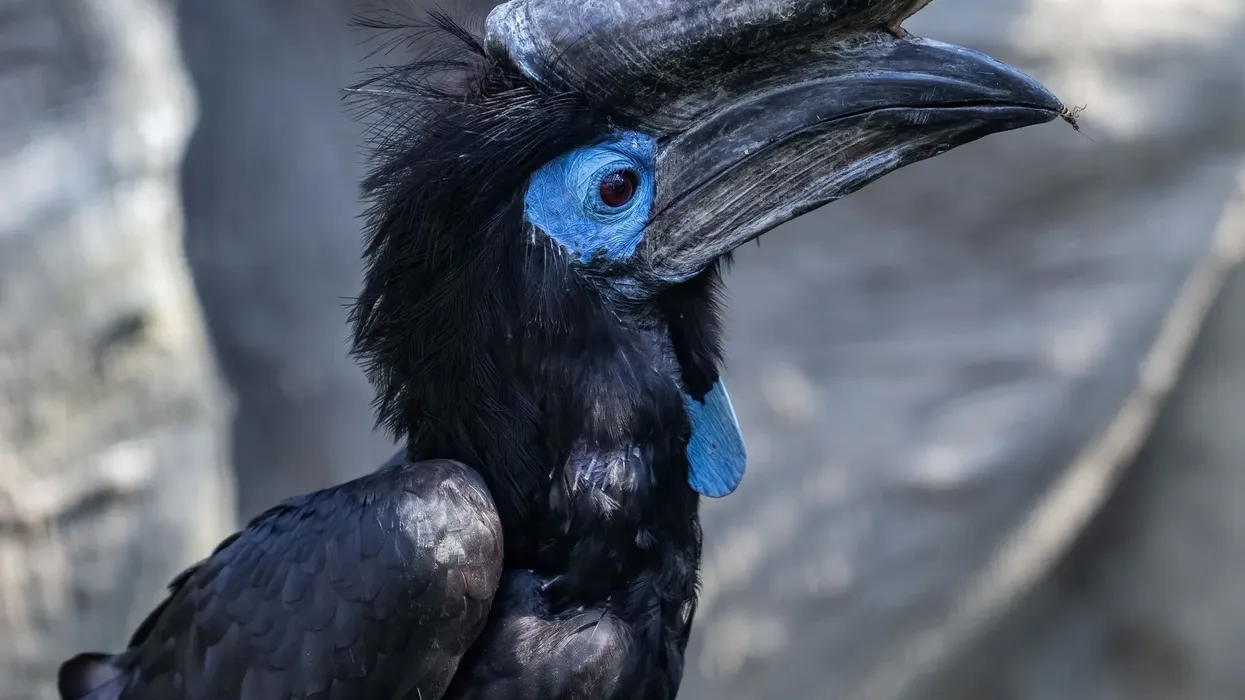The black bullhead (Ameiurus melas) belongs to the North American catfish family. Ameiurus is the Greek word for primitive or curtailed and can be used to describe the slight notch in the caudal fin of the fish.
They have a large head with small eyes and barbels located at the corners of their mouth. Black bullheads are typically dark in color with a yellowish-white lower half.
Their color can vary according to the location and the type of water in which they are living. Black bullheads are the only species among all the bullheads, which have completely pigmented barbels. This bullhead species is much smaller in size than the other catfish, like the blue or channel catfish.
However, it is one of the largest bullhead catfish species. Keep reading to know more about this fascinating squared-tailed fin creature.
If you like reading about the marine world, be sure to check out black dragonfish and walleye fish.
Black Bullhead Interesting Facts
What type of animal is a black bullhead?
A black bullhead is a type of fish.
What class of animal does a black bullhead belong to?
The black bullhead belongs to the class Actinopterygii.
How many black bullheads are there in the world?
No studies have been conducted to calculate the total population of black bullheads in the world.
Where does a black bullhead live?
Black bullheads could previously only be found in Saskatchewan, Manitoba, New Mexico, and South Texas. However, now black bullheads can easily be located in Idaho, California, Arizona, Nevada, British Columbia, and Alberta.
What is a black bullhead's habitat?
A black bullhead's habitat can range from tiny ponds to large lakes. They occupy soft bottoms in various creeks and rivers and can comfortably survive in muddy, polluted, and low oxygen waters.
Who do black bullheads live with?
The juvenile black bullheads often travel in schools, but the adult bullhead leads a solitary life.
How long does a black bullhead live?
The average lifespan of an adult Black Bullhead is about five years in the wild. In captivity, they can live up to 10 years.
How do they reproduce?
Spawning usually takes place between May and July. The female bullhead fans out a depression by clearing away all the debris and silt with the help of her snout.
The female black bullhead has the capacity to spawn up to five times in one hour and releases approximately 200 eggs each time while fanning the eggs in between the spawning. Females can produce up t0 2000-3800 eggs.
On the first day, the saucer-shaped nest is guarded by the female. But on the subsequent days, the adult male black bullheads watch over the nest for about ten days. The fry hatch from the eggs within four to ten days.
After the eggs hatch, they are looked after by both the parents for a short while. The fry then leaves their nests in compact schools.
What is their conservation status?
The Black bullhead has been listed as 'Least Concern' by the International Union for Conservation of Nature or the IUCN in their Red List.
Black Bullhead Fun Facts
What do black bullheads look like?

Black bullheads are broad-headed fish with black or dusky chin barbels. Their body does not have any scales, and their fins are made up of spines and rays. The rays in front are longer in size than the rounded anal fin, which has 19-23 rays.
They use their dusky or black spiny fins to slash at anglers. The upper part of its body is darker in color and appears to be dark brown or black.
The lower body is typically yellow or white. In contrast to the forked tail of most catfish, black bullheads have a squared tail fin. They also have small pointed teeth which are conical in shape.
How cute are they?
Black bullheads with their dark barbels do not appear to be cute.
How do they communicate?
Black bullheads usually communicate with the help of their swim bladder. The bladders can pick up on different vibrations and assist in communicating with others. Black bullheads also have the ability to generate sound through stridulation by clicking on the bony parts of the catfish's pectoral fins.
How big is a black bullhead?
The average length of the black bullhead (Ameiurus melas) is 8-14 in. It is roughly ten times bigger than a pet goldfish.
How fast can a Black bullhead swim?
There has not been enough research conducted to calculate the speed of a black bullhead.
How much does a black bullhead weigh?
A black bullhead fish typically weighs between 1-2 lb.
What are their male and female names of the species?
There are no unique names for the male and female black bullheads.
What would you call a baby Black bullhead?
The baby of black bullhead catfish can be referred to as fry.
What do they eat?
The black bullhead catfish are nocturnal fish and prefer feeding at night. Being omnivores, they feed on a wide variety of plant and animal matter for their diet.
The majority of their diet generally consists of crustaceans, aquatic young insects, and midge larvae. They also eat small fish and fish eggs as well. Their food intake decreases in the winter, and at times, they end up not eating at all.
They burrow themselves in the sand and stay there till the springtime to stay away from predators as well. Black bullheads have around 100,000 taste receptors all throughout their body.
Are they eaten by humans?
Yes, these bullhead catfish species can be safely consumed by humans after cleaning and preparing them properly.
Would they make a good pet?
Black bullheads make for a great pet and have a higher life expectancy in captivity. They are very easy to look after.
Temperature, oxygen, and the size of the tank are important factors to keep in mind before setting up for your new pet. The black bullhead aquarium should be at least 100gal to give your fish enough space to be swimming around.
The ideal temperature of the water should be between 79-97°F with enough oxygen available at all times.
Black bullheads are nocturnal fish, so be sure to keep the tank away from direct sunlight and give it plenty of space to hide. They are easy to feed, and their diet should consist of a mix of sinking pellets, frozen shrimp, or fish.
Did you know...
Black bullheads have poisonous spines. These pectoral spines can inflict stinging pain to their predators like the largemouth bass or the walleye.
The taste buds present in its mouth can help them in differentiating between its prey.
How to identify a black bullhead?
The broad head, spiny fins, and distinct barbels make it quite easy to identify a black bullhead. It, however, bears a close resemblance to the wild brown bullheads, and it can get confusing to differentiate amongst them.
The main difference between the two is the number of spines and rays. While the black bullheads have around 17-21 rays, the brown bullheads have about 21-24 soft rays and a uniformly colored anal fin. They also have dark mottling on the side of their body and has sharp, saw-like teeth.
Black bullhead temperature fluctuations when spawning
The temperature of the water plays a big role in spawning. The black bullheads lay their eggs when the water temperature is about 70 to 80°F. These bullheads can easily survive in low-oxygenated, high temperature, muddy and polluted waters, which are usually unsuitable wild environments for most fishes.
Here at Kidadl, we have carefully created lots of interesting family-friendly animal facts for everyone to discover! Learn more about some other fish including the catfish and the tetra.
You can even occupy yourself at home by drawing one of our Black bullhead coloring pages.

